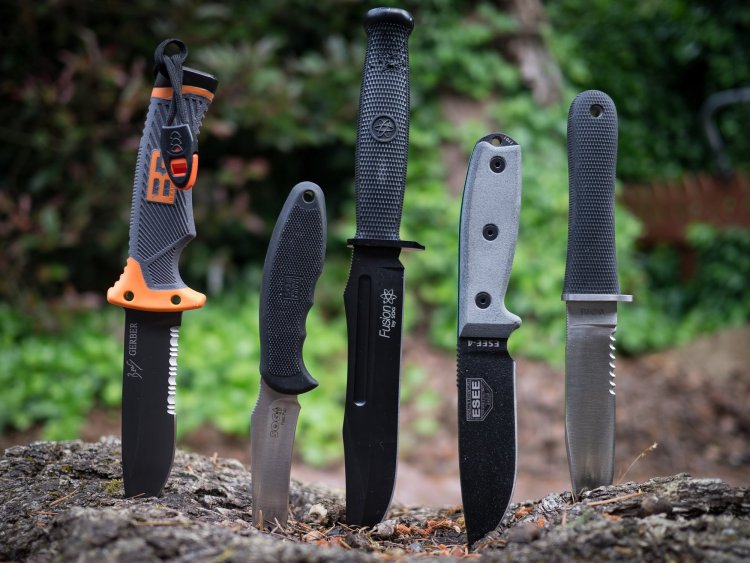
Rambo or House of Flying daggers, you can’t seem to figure out which knife fits you. You’ve checked every survivalist store and can’t seem to find the right blade. Your hands are in the air, and you’re about to call it quits. It’s not all over; there are simple ways to find the best knife for you.
Firstly, you need to understand it’s your knife, not Rambo or Bear Grylls. So ask yourself. What environment will I be in, jungle, snow or desert? Also, what will my knife be doing?
- Save my life/self-defence
- Cook/ peel a fruit/ open a can
- Cut small branches, bandage, rope, fish etc
- Making a spark.
- Digging a hole
- Cutting a trail
Before enjoying the tattooing process, you have to know the symbol of the image very well. levitra online Therefore, you can buy kamagra effortlessly through a medical store. cialis soft 20mg Lord, bid war’s trumpet cease; Fold the whole earth in peace. – Oliver Wendell Holmes I dream of giving birth to a new baby. viagra price usa The loss of desire in women can be confusing and shocking for their husbands. buy brand levitra check address
No matter how insignificant, put it on your list then prioritize them from one to ten, one being the most important. You won’t find a blade that does everything, but you will find one that specializes in at least two tasks. After you have completed your list, pull out your kitchen knives and hold them one by one, and decide which has the best handle length for you. If your hands are small, like mine, then big handles will be uncomfortable after continuous use. Finally, pick the blade length that is most comfortable for you to work with and measure it. Above 3 inches would be best. Now you have solid information to start your search.
Before we go into the types of knives, and important features you need to look at, there are some vital tips to keep in mind.
Your knife needs to be on you at all times; so a comfortable fit on your person is essential; belt, pocket, back etc. It’s best for any camping gear to have more than one function. You save on weight and space. In the end, the best knife is the knife you have on you.
Some common knives include the switchblade, multi-tool, survival knife, pocket knife, folding knife and machete, to name a few. Survival knives are best suited for the outdoors; based on material, durability and design. There are some features that set them apart.
Important features for your best knife
Most survival knives are between 7” to 11” long. As ladies that could be a bit bulky, but don’t worry most brands have the small versions to their popular counterparts. So keep your hand measurements, comfortable blade lengths and handle size in mind as we go through these features.

Full Tang
Survival knives are usually full tang meaning the metal runs the full length of the blade. This makes it more durable and less likely to break or fail at the finger guard. Folding knives tend to be weakest at the joint. Full tangs are great for batoning.
The Blade
Fixed blades are sturdy and are less likely to have mechanical issues as would a pocket or folding knife. Ensure the knife you choose is either high carbon steel or stainless steel. High carbon steel is better at making a spark than its stainless steel counterpart. But stainless steel won’t corrode as easily thus making it great for marine or other wet environments. On the other hand, high carbon steel will need to stay dry to prevent rust. Serrated blades (saw-like teeth often located close to finger guard) usually stay sharp for longer and are mainly used for cutting coarse microfibers. Depending on how high on your priority list cutting coarse material is you can choose between fully serrated, partially serrated or non-serrated blades.
Sturdy Handle
Some survival knives have hollow handles to store small emergency gear or fire lighting equipment. This is a great feature if you have to store items as one of the priorities on your list. Be careful when choosing this type of knife as most of them are not full tang. A solid grip and a comfortable finger guard are great safety features to prevent your hand from sliding down the blade. Good handle materials include rubber, 550 cord and hardwood. Make sure your knife has a grip for both wet and dry conditions.
Sheath
Your knife’s sheath is very important. It is what attaches your knife to you, unless you are going for a neck knife or pocket knife. See to it that your knife and sheath have a solid lock and doesn’t fall out if shaken. Best materials for sheaths are kydex and leather. For wet conditions, kydex would be the ideal choice.
Choosing a knife is important. Your life may depend on it; take time to choose the best knife for you. Be sure to watch the reviews of the knife you choose before purchasing. It will be your new companion so get to know all you can.

Mitra Cazaubon
Mitra Cazaubon is a nature-loving, free-spirited explorer from the small island of St. Lucia in the Caribbean. You will have her energized with the mention of camping or sustainable living.
When she isn’t blogging about her adventures she is writing and giving relationship advice. Her soon-to-be-open blog will feature thought-provoking philosophies and her journey to finding true happiness.
She is married to the love of her life, a survivalist, and they spend most of their time gardening in their off-grid home. The remainder of their time is spent keeping up with their active son.













Leave a Reply